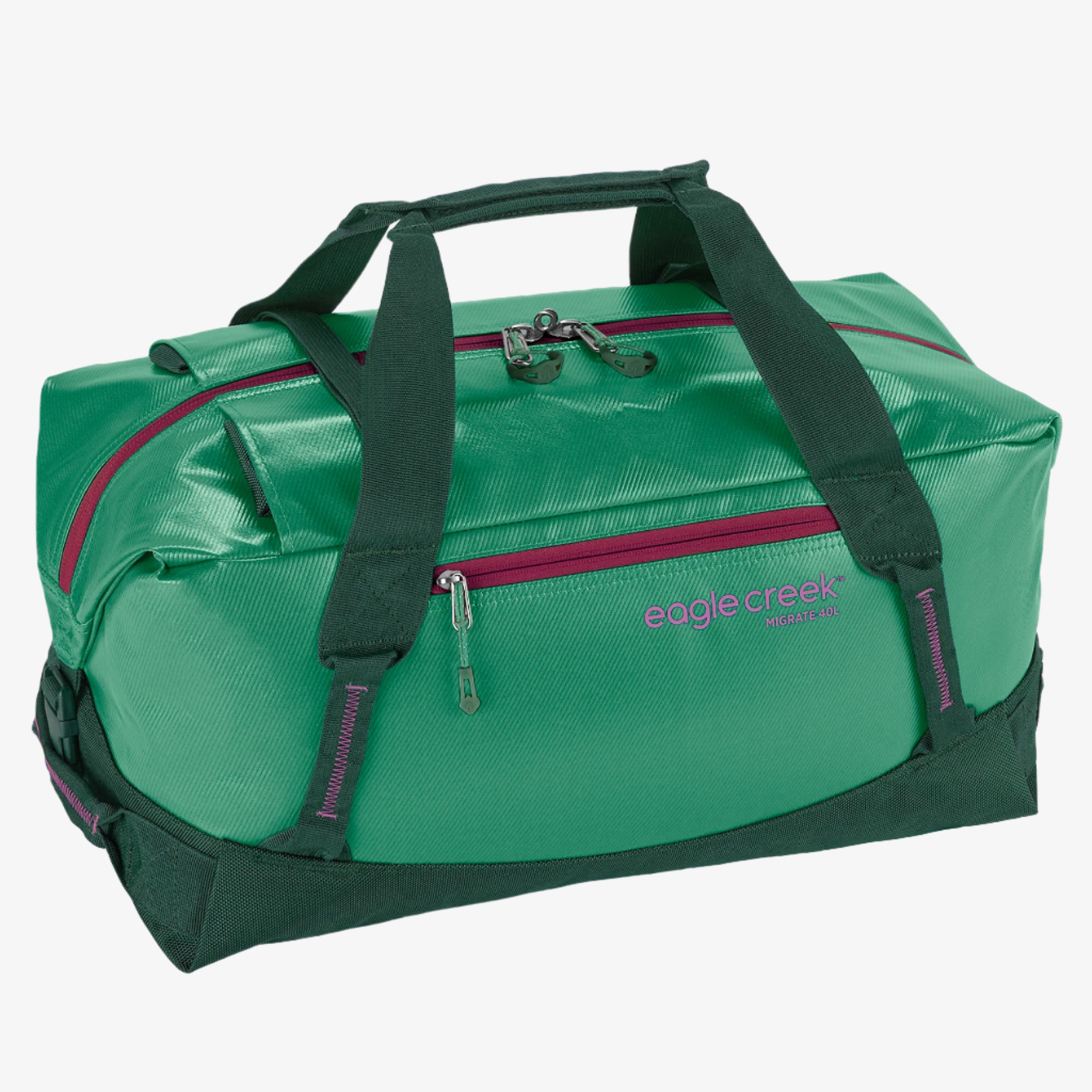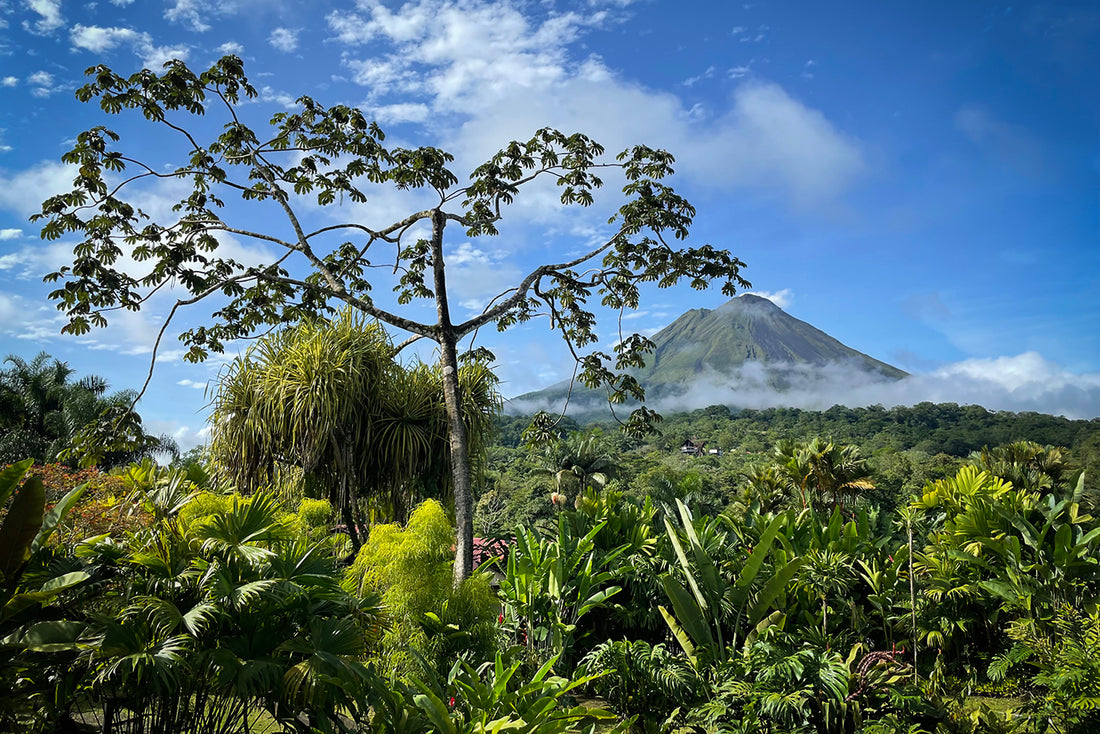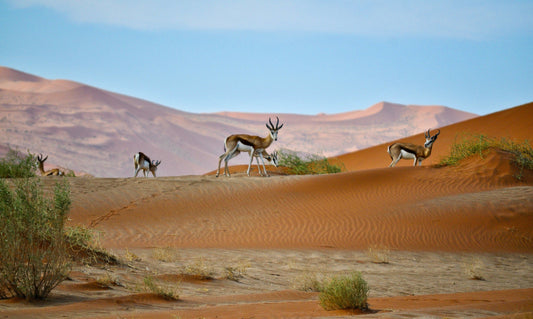Global travelers are increasingly looking at the eco-friendliness of their destination before planning a trip, since many of the world’s most beautiful stopping points are on the brink of being loved to death through overtourism. Need some inspiration for the top destinations in 2022 for eco tourists? These nine under-the-radar destinations provide the sustainable getaway that you should consider for your next sustainable vacation.
When the subject of eco-tourist destinations springs up, the first place that springs to mind is usually Costa Rica, with its strict animal protections and renewable energy. Or maybe Iceland, with its abundant geothermal energy that heats the water in houses and hotels while providing ample natural spa opportunities for the sustainable-minded traveler. But there are other destinations around the world that are setting ambitious goals toward making their countries in general, and tourism in particular, more sustainable. And several are succeeding to various degrees!
Considerations When Picking a Sustainable Eco-Tourist Destination
When planning an eco-friendly vacation, it’s important to look first at the mode(s) of transportation that you will be using—both to get there and back home, and to travel around while you're visiting. Are those forms of transportation committed to sustainability? Carpooling with others or biking, packing lightly, conserving materials where and when you can (like by carrying around a reusable water bottle), and shopping locally can help minimize your carbon footprint.
And before you head anywhere, make sure you’re packing to fit your sustainability goals. A sustainable vacation needs an eco-friendly bag. The roomy Gear Warrior 95L bag and its smaller carry-on counterparts are made from 100% recycled PET ripstop with recycled coating. They’re water resistant, have outside straps for extra gear, and many can be carried as a duffel bag or backpack or rolled on their wheels (three bags in one!). In short, these bags are built for wherever your adventure vacation might take you. Then, reduce your plastic consumption by using reusable packing cubes to save space, stay organized, and separate wet and dirty clothes from clean ones.
Once you have the Eagle Creek sustainable gear for travel, you’re ready to visit one of these hidden eco-tourist gems that make ideal sustainable travel destinations for responsible travelers. We won’t say they’re perfect (who is?), but they’re making measurable strides. Your ecotourism dollars might provide the incentive they need to continue.
Best Ecotourism Destinations
1. Slovenia
Eco Credentials
About 60% if this Eastern European country is covered in forest and 53.6% of its land is protected, making it the European country with the highest percentage of such territory. The 40 parks and reserves in Slovenia have myriad hiking trails from which to view some 20,000 different plants and animals. Its capital city, Ljubljana, has also won accolades for its many sustainability and eco-tourist initiatives.
Things to Do
Tour Ljubljana’s car-free historic center via electric trams or by bicycle (the city’s bike-sharing program has 580 bikes). Stay at the Park Hotel, with its roof-top garden and apiary. Get out of the city and stay at one of several glamping facilities that feature extras like nearby walking trails, geothermal pools, or produce gardens where guests can help themselves.
2. Whistler, British Columbia
Eco Credentials
Yes, we know, there is a lot about skiing that’s not all that green and sustainable. But the Whistler community, including the ski resort, is trying its best with an ambitious goal of being carbon neutral by 2030. Since the beginning of this initiative in 2000, the resort has reduced waste by over 70%. Since 2009, hydroelectricity has powered the resort’s snow cannons, ski lifts, restaurants, and hotels.
Green building standards are also in place for all new construction. And Canada’s Partners for Climate Protection recognized Whistler as the first community in the country to complete its five milestones toward reducing greenhouse gas emissions.
Things to Do
If you visit this thriving eco-tourist destination, you can park your car and use the resort’s extensive shuttle system to get around. Use the area’s extensive off-street trail system to bike in summer or cross-country ski in winter. Go hiking, bear-watching, or explore a tree-top walk. And of course, ski.
3. Aruba
Eco Credentials
Can a Caribbean Island whose economy runs on all-inclusive resorts and cruise-ship visitors possibly green its tourism? Aruba thinks so. The island aims to rely 100% on renewable energy, including wind farms and solar panels. Starting in 2019, the island transitioned to a total ban on single-use items, including plastic shopping bags, cups and straws, Styrofoam containers, and disposable coolers. Perhaps most important, as of 2020 the island fully banned sunscreens that contain oxybenzone, which has been shown to bleach coral reefs.
Things to Do
Pack your own chemical-free sunscreen when you go to this sustainable eco-tourist destination, or by locally made, reef-safe sunscreen from Aruba Organics. Snorkel along the newly protected reef, hike in the national forest that covers 20% of the island, and visit the donkey sanctuary. Also, the Bucuti & Tara Beach Resort is Aruba’s first carbon-neutral property. Guests can participate in beach cleanups and see sea turtles hatch on protected beaches (at the right time of year).
4. Sanibel & Captiva Islands, Florida
Eco Credentials
Two-thirds of Sanibel Island is a permanent nature preserve, and it’s the more developed of these connected barrier islands. The J.N. Darling National Wildlife Refuge is home to 230 bird species, plus otters, alligators, armadillos, and gopher tortoises. Plus, 50 types of fish swim in the islands’ partially protected waters, and 15 miles of ungroomed beaches are home to 250 types of seashells.
The islands recently joined the growing list of sustainable travel destinations banning plastic straws and eight of Sanibel’s hotels are part of the Florida Green Lodging Program. This means they might have geothermal-heated swimming pools and employ practices aimed at water conservation, energy efficiency, and recycling—and they use green cleaning products and organic fertilizers.
Things to Do
Walk on the beaches collecting shells and keeping your eyes peeled for wildlife, explore the national wildlife refuge, kayak protected waters, bike on 25 miles of beautiful off-road paths.
5. Chile
Eco Credentials
This South American country’s sustainability efforts begin in the capital city, Santiago. Here, the steady addition of new bike paths, an expanded underground metro system, and car restrictions in the city center have cut down on congestion and reliance on fume-spewing buses.
Moreover, the city increasingly relies on solar energy to fuel the metro system—part of a nationwide effort to cut the national carbon footprint by 30% by 2030. Additionally, the government has set aside 35 million acres of land for conservation and Santiago and is promoting renewable energy nationwide. Five years ago, the National Service for Tourism of Chile initiated an “S” certification for three levels of sustainability. Now more than 70 tourism services have achieved at least one level.
Things to Do
Visit one of four regions in Chile that have made it onto Green Destinations’ top 100 list of sustainable destinations. These include Huilo Huilo, one of Chile’s top attractions for its waterfalls and large canopy network; the Chiloé Island, where the local community has been brought into the process of building sustainable tourism; the town of Curacaví, known for local food that incorporates regional organic ingredients and sustainable municipal policies; and Cape Horn Biosphere Reserve, which includes three national parks. You can also stay at any number of certified sustainable hotels, resorts and glamping facilities in Patagonia and other parts of the country.
6. The Republic of Palau
Eco Credentials
Palau is a small country that's made up of more than 500 islands, and is located in the Pacific Ocean, between the Philippines and Guam. As one of the world’s most prominent diving destinations, Palau risked incurring great harm in the country’s pristine waters from too much interference by man. Although the island’s remote location in Micronesia has kept it off the beaten path of mass tourism, the government is still being proactive and making an effort to ensure that the country's gorgeous natural environment remains minimally impacted by human touch. Nearly 500 miles of reefs are designated no-fishing zones, and as a result, many endangered fish species have repopulated the area.
Things to Do
The Palau Conservation Society oversees about two dozen conservation zones and is in charge of encouraging sustainable development. It's an excellent, guilt-free choice for a beach getaway. Diving is best in Palau between December and March, because the water is warm and calm, and you're likely to experience less rain.
7. Lithuania
Eco Credentials
Lithuania is a sleeper favorite with responsible tourists as the country embraces the U.N.’s sustainable development goals and works toward having a greener ecotourism industry. The country has set a goal of 23 percent use of renewable energy by 2020—and it reached that goal handily in 2014 and has skyrocketed past that number in the years since. Lithuania was the first Baltic nation to become part of the World Tourism Organization and has, ever since, demonstrated a commitment to sustainability.
Things to Do
The country’s national parks are a source of great pride and, accordingly, the government has made strides to preserve the natural beauty of these spaces. The winters there can be very chilly, so go in the summertime, when temperatures are usually around 68 to 77 degrees Fahrenheit (20 to 25 degrees Celsius).
8. Kenya
Eco Credentials
The Kenyan government has created Ecotourism Kenya to keep a watchful eye on this African nation’s natural resources, and it is an active member of the World Travel & Tourism Council, working to become a top eco-friendly tourist destination. With community outreach projects and widespread education, Ecotourism Kenya safeguards the native flora and fauna. The country is also actively working on adapting local livelihoods to the realities of climate change, as well as other key initiatives in partnership with the UNDP.
Things to Do
Tourists flock to Kenya’s breathtaking savannahs for safari encounters with some of Earth’s most majestic wild animals. The country has no fewer than fifty national parks and preserves, and many peaks you can climb. On Kenya’s coastline, visitors can stroll along beaches of virgin white sand or dive among glorious coral reefs. Like in Costa Rica, lodges in Kenya are rated according to their environmental policies, ensuring that you understand exactly how your vacation affects the local environment. To see the most wildlife that you can, visit between the end of June and October.
9. Costa Rica
Eco Credentials
As noted, Costa Rica is a beloved tropical getaway and is well known to many eco-tourists. With lush rainforests, national parks, and nature reserves, it’s a pillar of sustainable development within the international community. The country is on the forefront of eco-friendliness with its national rating system that grades lodgings on their environmental conscientiousness.
Things to Do
The country is full of eco-lodges that are both swanky and humble, featuring such amenities as organic, farm-to-table dining, naturally-heated rock pools for bathing, and tours that are guided by experts in sustainable tourism, just to name a few. It’s a beautiful spot with a well-developed sustainable tourism industry and ecotourism infrastructure to ensure that your next trip there has a tiny impact on the country’s stunning biodiversity and natural beauty. The most popular time to visit Costa Rica (which is also the busiest and most expensive time) is during the country's dry season, between December and April.
No matter where you visit, remember to pack lightly in a carry-on bag to reduce your own travel footprint as much as possible!
Related Links (from Eagle Creek blog):
5 Ways You Can Help Battle Overtourism
How to Travel More Sustainably
How to Reduce Your Carbon Footprint







































